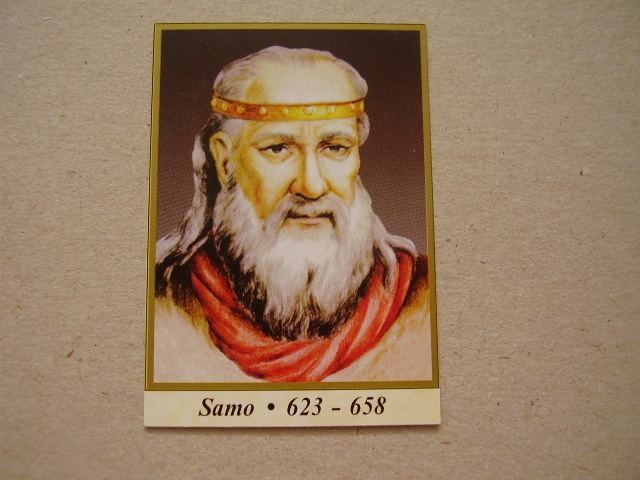Reign 623–658 Predecessor N/A Name Samo Samo | Successor Title dismantled Died c. 658 | |
 | ||
Spouse At least twelve Wendish noblewomen | ||
THE BEST OF SAMO (sana & momo) [humor]
Amanecí Otra Vez / Un Mundo Raro / Cuando Sale la Luna / Échame a Mí la Culpa (Medley [...
Samo founded the first recorded political union of Slavic tribes, known as Samo's Empire (realm, kingdom, or tribal union), stretching from Silesia to present-day Slovenia, ruling from 623 until his death in 658. According to Fredegarius, the only contemporary source, Samo was a Frankish merchant who unified several Slavic tribes against robber raids and violence by nearby settled Avars, showing such bravery and command skills in battle that he was elected as the "Slavic king" (Latin: Rex Sclavorum). In 631, Samo successfully defended his realm against the Frankish Kingdom in the three-day Battle of Wogastisburg.
Contents
- THE BEST OF SAMO sana momo humor
- Amanec Otra Vez Un Mundo Raro Cuando Sale la Luna chame a M la Culpa Medley
- Reign
- Popular literature
- References

Reign
The dates for Samo's rule are based on Fredegar, who says that he went to the Slavs in the fortieth year of Chlothar II (i.e., 623–24) and reigned for thirty five years. The interpretation that places the start of Samo's reign in the year of Fredegar's arrival has been questioned on the basis that the Wends would have most likely rebelled after the defeat of the Avar khagan at the First Siege of Constantinople in 626. The Avars first arrived in the Pannonian Basin and subdued the local Slavs in the 560s. Samo may have been one of the merchants who supplied arms to the Slavs for their regular revolts. Whether he became king during a revolt of 623–24 or during one that inevitably followed the Avar defeat in 626, he definitely took advantage of the latter to solidify his position. A string of victories over the Avars proved his utilitas (usefulness) to his subjects and secured his election as rex (king). Samo went on to secure his throne by marriage into the major Wendish families, wedding at least twelve women and fathering twenty-two sons and fifteen daughters.
Each year, the Huns [Avars] came to the Slavs, to spend the winter with them; then they took the wives and daughters of the Slavs and slept with them, and among the other mistreatments [already mentioned] the Slavs were also forced to pay levies to the Huns. But the sons of the Huns, who were [then] raised with the wives and daughters of these Wends [Slavs] could not finally endure this oppression anymore and refused obedience to the Huns and began, as already mentioned, a rebellion. When now the Wendish army went against the Huns, the [aforementioned] merchant Samo accompanied the same. And so the Samo’s bravery proved itself in wonderful ways and a huge mass of Huns fell to the sword of the Wends.
The most well-documented event of Samo's career was his victory over the Frankish royal army under Dagobert I in 631 or 632. Provoked to action by a "violent quarrel in the Pannonian kingdom of the Avars or Huns" during his ninth year (631–32), Dagobert led three armies against the Wends, the largest being his own Austrasian army. The Franks were routed near Wogastisburg (Latin castrum Vogastisburg), an unidentified location meaning "fortress/castle of Vogast." The majority of the besieging armies were slaughtered, while the rest of the troops fled, leaving weapons and other equipment lying on the ground. In the aftermath of the Wendish victory, Samo invaded Frankish Thuringia several times and undertook looting raids there. The Sorbian prince Dervan abandoned the Franks and "placed himself and his people under Samo's realm".
In 641 the rebellious duke of Thuringia, Radulf, sought an alliance with Samo against his sovereign, Sigebert III. Samo also maintained long-distance trade relationships. On his death, however, his title was not inherited by his sons. Ultimately, Samo can be credited with forging a Wendish identity by speaking on behalf of the community that recognised his authority.
Popular literature
Few written works have their storyline taking place during Samo's Empire. One of them is the book Fire Worshipers.
